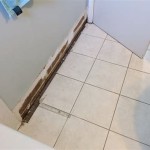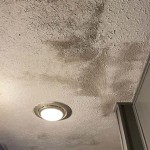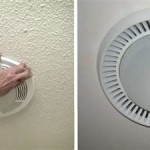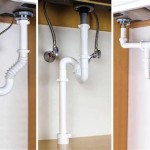How To Test A Bathroom Fan Motor
Bathroom exhaust fans play a crucial role in removing excess moisture and odors, preventing mold growth and preserving the structural integrity of the bathroom. A malfunctioning fan can lead to these undesirable outcomes. Therefore, knowing how to test a bathroom fan motor is a valuable skill for homeowners. This article outlines the steps involved in diagnosing and troubleshooting a bathroom fan motor.
Safety First: Power Down the Circuit
Before commencing any electrical work, prioritize safety. Turn off the power to the bathroom fan circuit at the main electrical panel. This crucial step eliminates the risk of electrical shock. Double-check that the power is off by attempting to switch the fan on. If the fan does not operate, the power is successfully disconnected.
Visual Inspection and Basic Troubleshooting
Begin by visually inspecting the fan. Remove the cover of the fan housing. Look for any obvious obstructions, such as dust buildup on the fan blades or debris lodged in the motor housing. Excessive dust can hinder the fan's operation. If obstructions are present, carefully clean the fan blades and motor housing with a soft brush or vacuum cleaner. Ensure the power remains off during this process.
Next, check the fan blades for free movement. Manually rotate the blades. They should spin freely and easily. If the blades are stiff or resistant to movement, the motor bearings may be worn or seized. This often indicates the need for motor replacement.
Testing the Motor with a Multimeter
Testing the motor with a multimeter provides a more definitive diagnosis. A multimeter measures voltage, resistance, and continuity. Set the multimeter to the ohms (resistance) setting. Locate the motor's terminals. These are typically located on the side of the motor housing. Consult the fan's wiring diagram if the terminals are not readily apparent. Touch the multimeter probes to each of the motor terminals. A good motor will typically show a reading between 10 and 20 ohms. A significantly higher or lower reading, or an infinite reading (OL), suggests a faulty motor.
Capacitor Check (If Applicable)
Many bathroom exhaust fans utilize a capacitor to start the motor. A failing capacitor can prevent the motor from starting even if the motor itself is functional. Before testing the capacitor, discharge it completely. To discharge, use an insulated screwdriver to short across the capacitor terminals. Note: Exercise extreme caution when discharging a capacitor, as stored electricity can cause a shock. After discharging, remove the capacitor from the circuit. Set the multimeter to the capacitance setting. The specific setting will depend on the capacitor's rating, which is often printed on the capacitor itself. Touch the multimeter probes to the capacitor terminals. Compare the reading with the capacitor's rated value. A significant deviation from the rated value indicates a faulty capacitor.
Testing the Power Supply
If the motor and capacitor appear to be functioning correctly, the issue may lie with the power supply. Turn the power back on to the fan circuit at the electrical panel. Set the multimeter to the voltage (AC) setting. Carefully touch the multimeter probes to the wires supplying power to the fan. A reading of approximately 120 volts (in North America) indicates that power is reaching the fan. If there is no voltage present, check the circuit breaker or fuse at the electrical panel. A tripped breaker or blown fuse will interrupt the power supply.
Evaluating the Switch
A malfunctioning switch can also prevent the fan from operating. With the power turned off again at the electrical panel, disconnect the wires from the switch. Set the multimeter to the continuity setting. Touch the multimeter probes to the switch terminals. When the switch is in the "on" position, the multimeter should show continuity. When the switch is in the "off" position, there should be no continuity. If the switch does not function in this manner, it needs replacement.
By systematically following these testing procedures, homeowners can effectively diagnose the cause of a malfunctioning bathroom exhaust fan and determine whether a simple repair or a complete motor replacement is necessary. Remember to prioritize safety by disconnecting the power before performing any electrical work. If uncertainty remains, consulting a qualified electrician is always recommended.

How To Test And Replace A Bathroom Exhaust Fan Motor Broan Nutone

Is Your Bathroom Exhaust Fan Working Efficiently Multi Trade Building Services

How To Troubleshoot A Fan Motor Zoro Com

How To Test A Fan Motor With Multimeter

Bath Fan Motor Loud Noisy Troubleshooting

How To Check If Your Bathroom Exhaust Fan Is Working Properly

How To Check If Your Bathroom Exhaust Fan Is Working Plumbing

How To Troubleshoot A Fan Motor Zoro Com

How To Replace An Exhaust Fan Motor Ace Hardware

Can T Figure Out How To Wire Capacitor With Exhaust Fan Doityourself Com Community Forums
Related Posts







